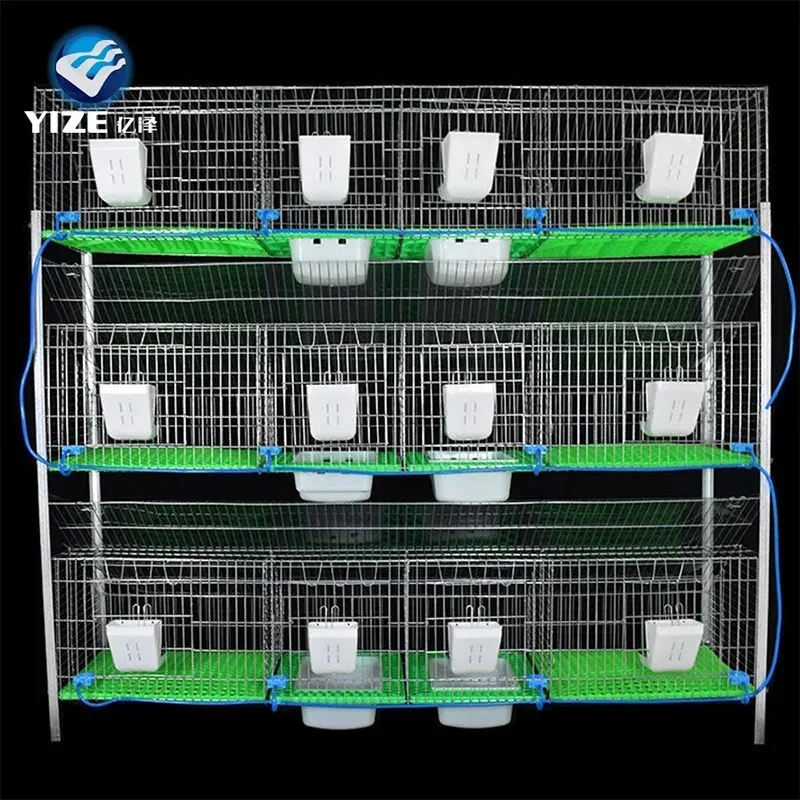broiler cage
Nov . 21, 2024 23:10 Back to list
broiler cage
The Controversy of Broiler Cage Systems in Poultry Farming
The broiler chicken industry has evolved significantly over the last few decades, resulting in an efficient yet contentious production system. One of the most debated aspects of broiler production is the use of cage systems, which are designed to house chickens in a controlled environment. While proponents argue that these systems enhance productivity and optimize space, opponents raise serious concerns about animal welfare, environmental impacts, and food quality.
Understanding Broiler Cage Systems
Broiler cages are usually designed to accommodate multiple chickens in a confined space, allowing for easier management and feeding. These systems can be stacked vertically, maximizing the use of limited farm space. The primary objective of these cages is to achieve high-density housing, which leads to greater productivity. Supported by advancements in breeding and nutrition, broiler production has become an efficient industry, capable of meeting the increasing demand for chicken meat globally.
Economic Efficiency
Proponents of broiler cage systems argue that they provide economic advantages. The density of birds within a confined area allows farmers to produce more meat with less land, labor, and other resources. This efficiency can contribute to lower prices for consumers and greater accessibility to chicken as a protein source. Additionally, these systems can make stringently controlled feeding and monitoring easier, potentially leading to healthier birds and reduced disease risk.
Animal Welfare Concerns
Despite the economic benefits, cage systems have come under fire for their impact on animal welfare. Critics argue that confining chickens in small cages can lead to stress and behavioral issues, as they are unable to exhibit natural behaviors like roaming, spreading their wings, and socializing. Research has shown that chronic stress can compromise the immune system, making birds more susceptible to illness. The intense housing conditions can also lead to health problems such as leg deformities and cardiovascular diseases.
Organizations advocating for animal welfare, including the Humane Society and the World Animal Protection, have pushed for a transition away from cage systems. They emphasize the need for more humane housing systems that allow chickens to express natural behaviors, thereby improving their overall quality of life. The debate surrounding animal welfare has gained traction, leading some countries and regions to impose regulations aimed at phasing out traditional cage systems in favor of more spacious alternatives.
broiler cage

Environmental Considerations
The environmental impact of broiler cage systems cannot be overlooked. High-density housing creates significant waste, leading to pollution concerns. Manure management becomes more challenging, and if not handled properly, it can contaminate soil and waterways. Additionally, intensive farming practices can contribute to biodiversity loss and increased greenhouse gas emissions.
A move towards more sustainable and less intensive farming models is gaining popularity, driven by consumer demand for ethically sourced and environmentally friendly products. Integrating outdoor access or employing free-range systems is being explored as a viable alternative that permits chickens to roam while still maintaining productivity levels.
Food Safety and Quality
Another aspect to consider in the cage system debate is food safety and quality. Conditions in cage systems can influence the growth rates and health of chickens, potentially impacting meat quality. There are concerns that overcrowding could lead to increased antibiotic use, raising issues regarding antibiotic resistance in both animals and humans.
Furthermore, meat from chickens raised in less stressful environments is believed to be of higher quality, possibly affecting taste and texture. Consumers are becoming more discerning, seeking products that not only meet their dietary needs but also align with their values regarding health, ethics, and sustainability.
Conclusion
The use of broiler cages in poultry farming continues to be a polarizing topic. While these systems offer economic advantages and increased productivity, they raise pressing animal welfare and environmental concerns. As consumer preferences shift towards more humane and sustainable practices, the poultry industry may need to adapt to ensure it meets the demands of a more conscientious market. The future of broiler production may well hinge on finding a balance between efficiency, ethical considerations, and environmental responsibility.
-
Hot Sale 24 & 18 Door Rabbit Cages - Premium Breeding Solutions
NewsJul.25,2025
-
Automatic Feeding Line System Pan Feeder Nipple Drinker - Anping County Yize Metal Products Co., Ltd.
NewsJul.21,2025
-
Automatic Feeding Line System Pan Feeder Nipple Drinker - Anping County Yize Metal Products Co., Ltd.
NewsJul.21,2025
-
Automatic Feeding Line System - Anping Yize | Precision & Nipple
NewsJul.21,2025
-
Automatic Feeding Line System - Anping Yize | Precision & Nipple
NewsJul.21,2025
-
Automatic Feeding Line System-Anping County Yize Metal Products Co., Ltd.|Efficient Feed Distribution&Customized Animal Farming Solutions
NewsJul.21,2025






